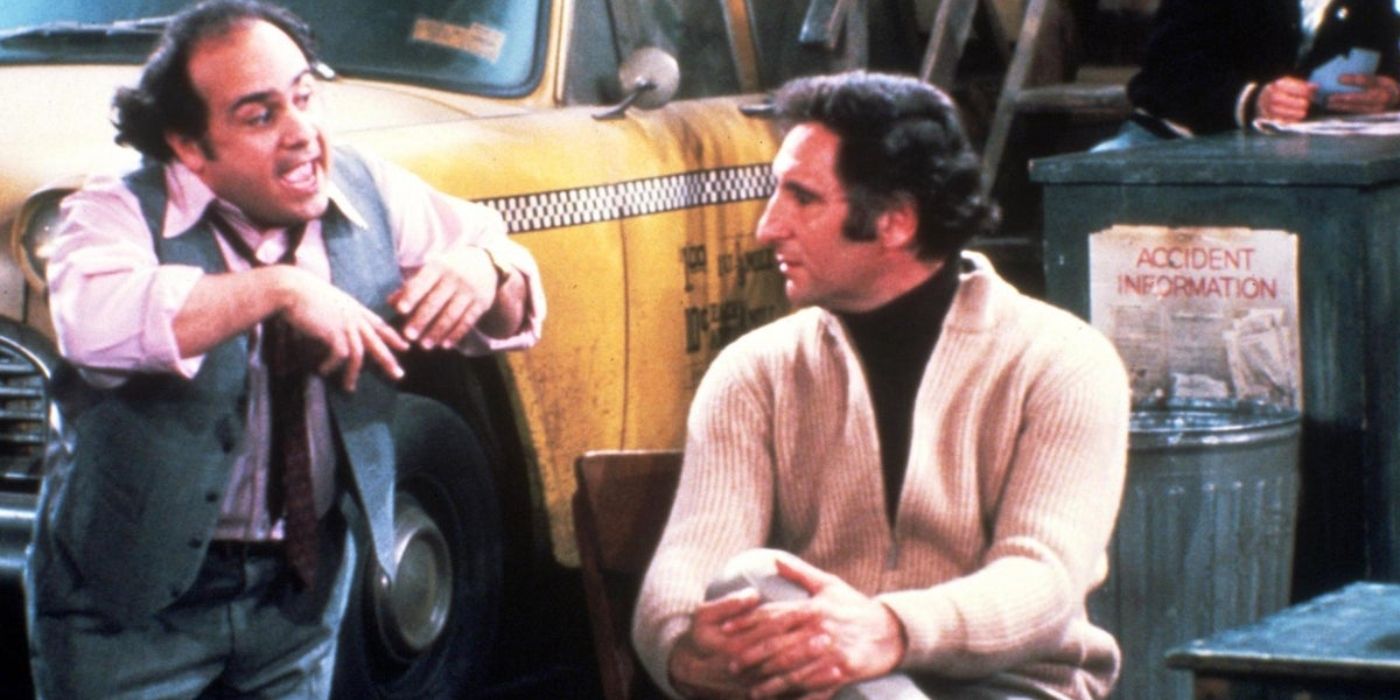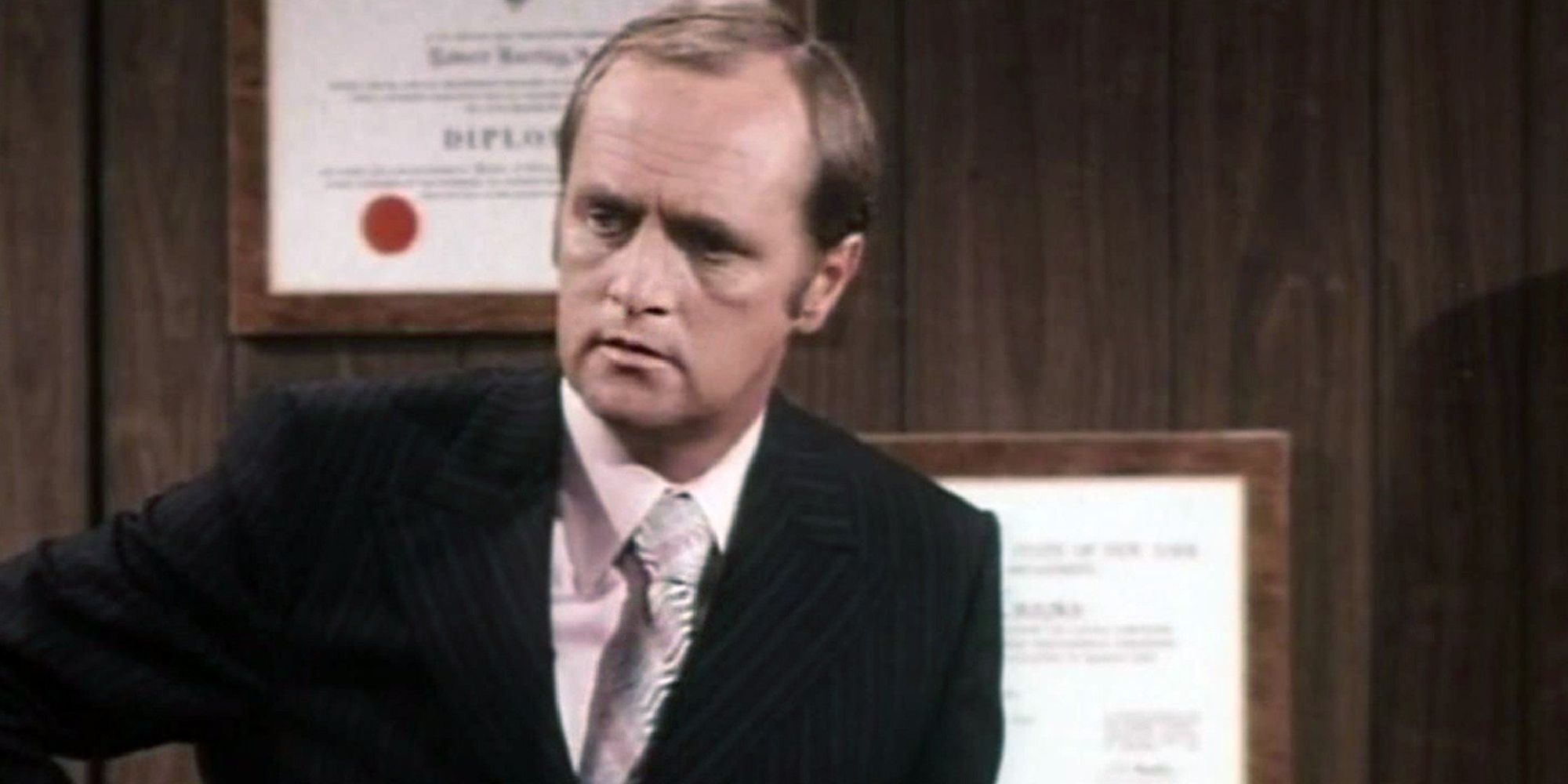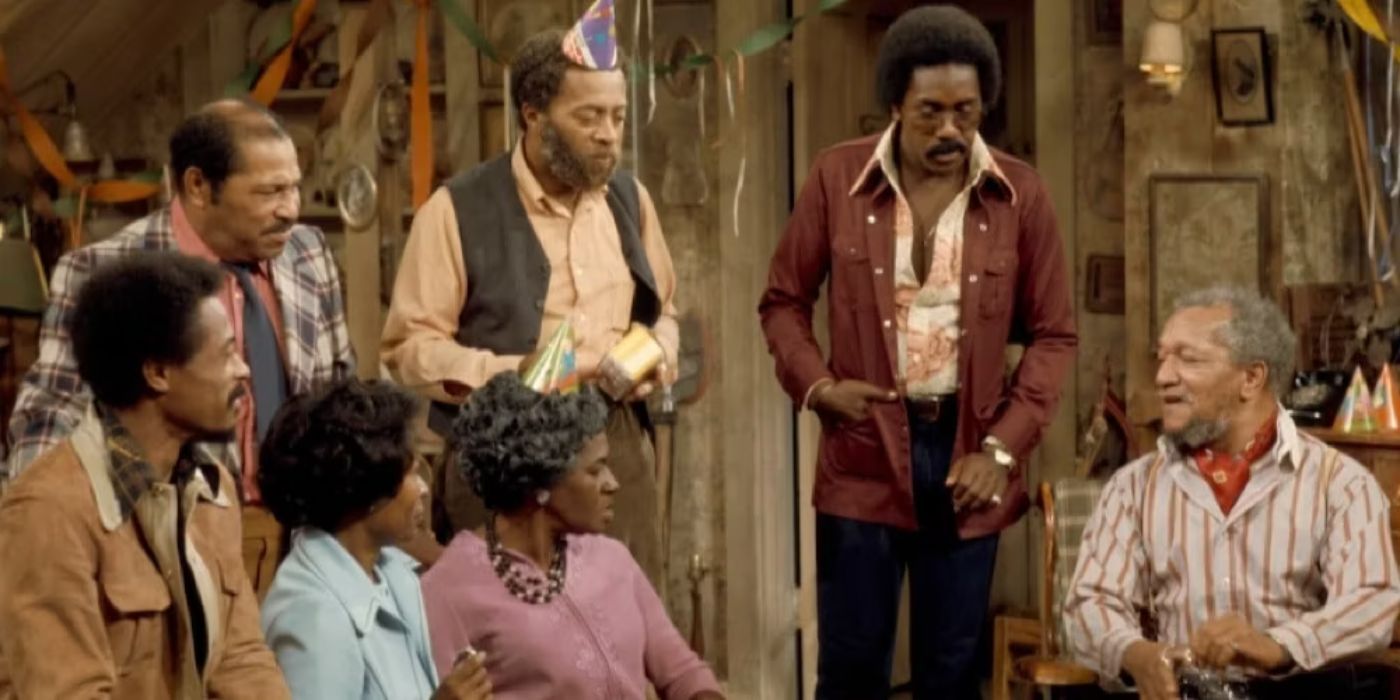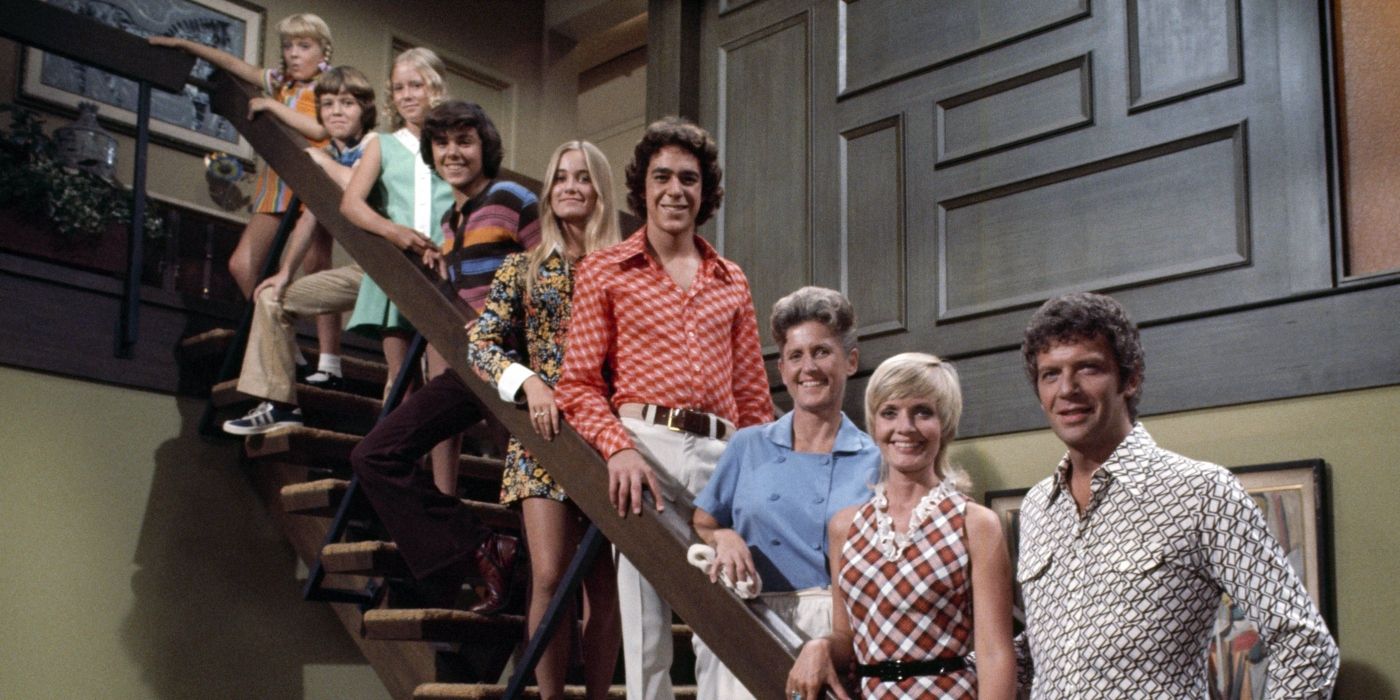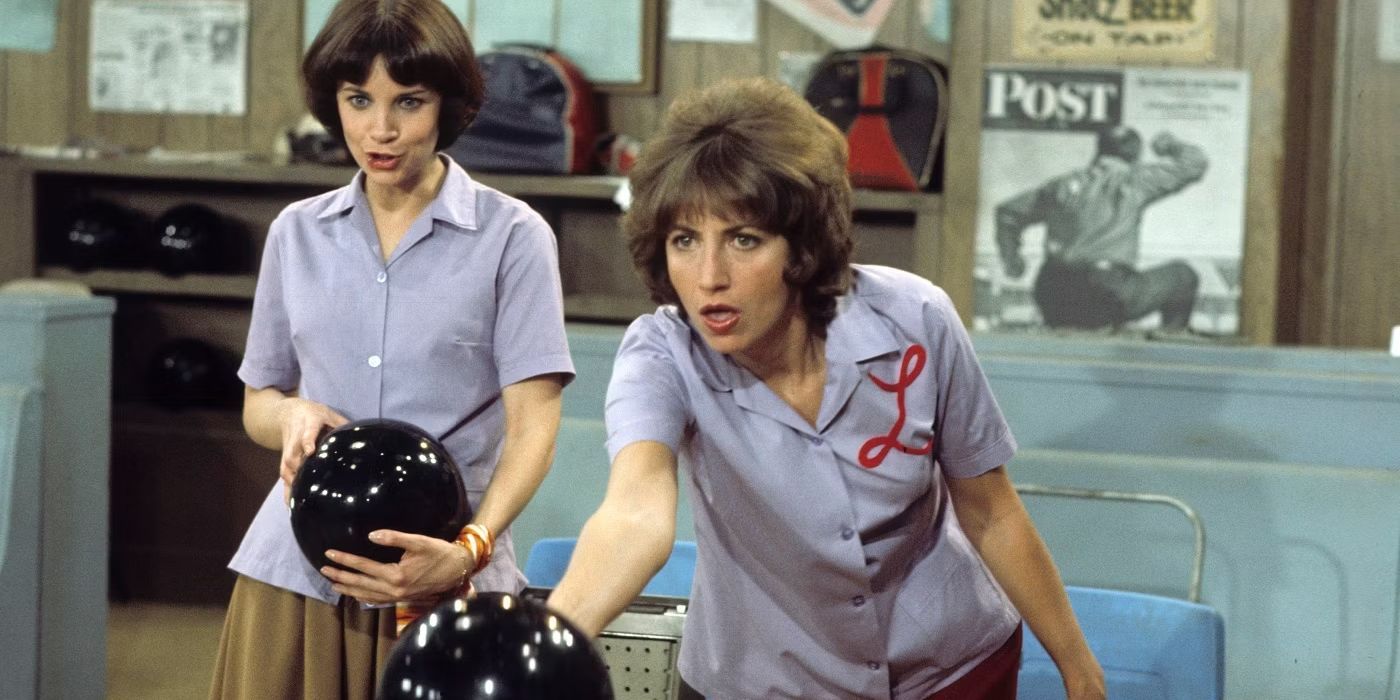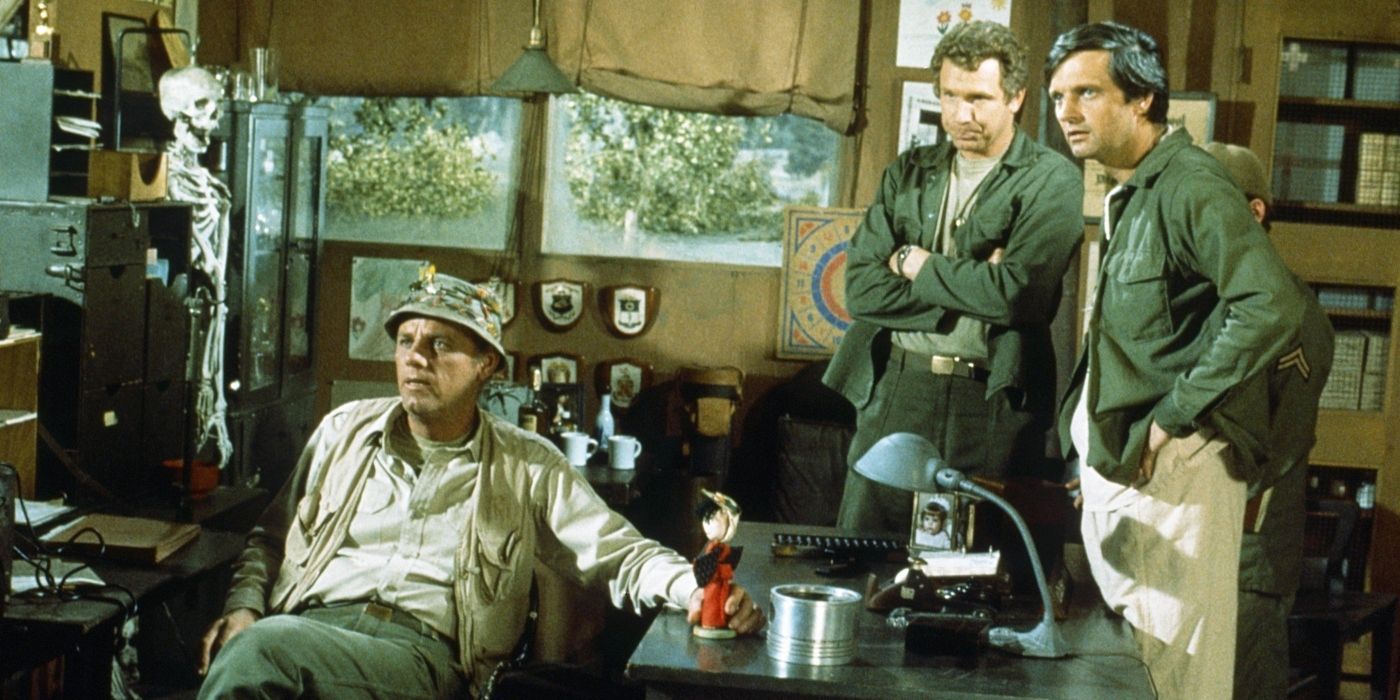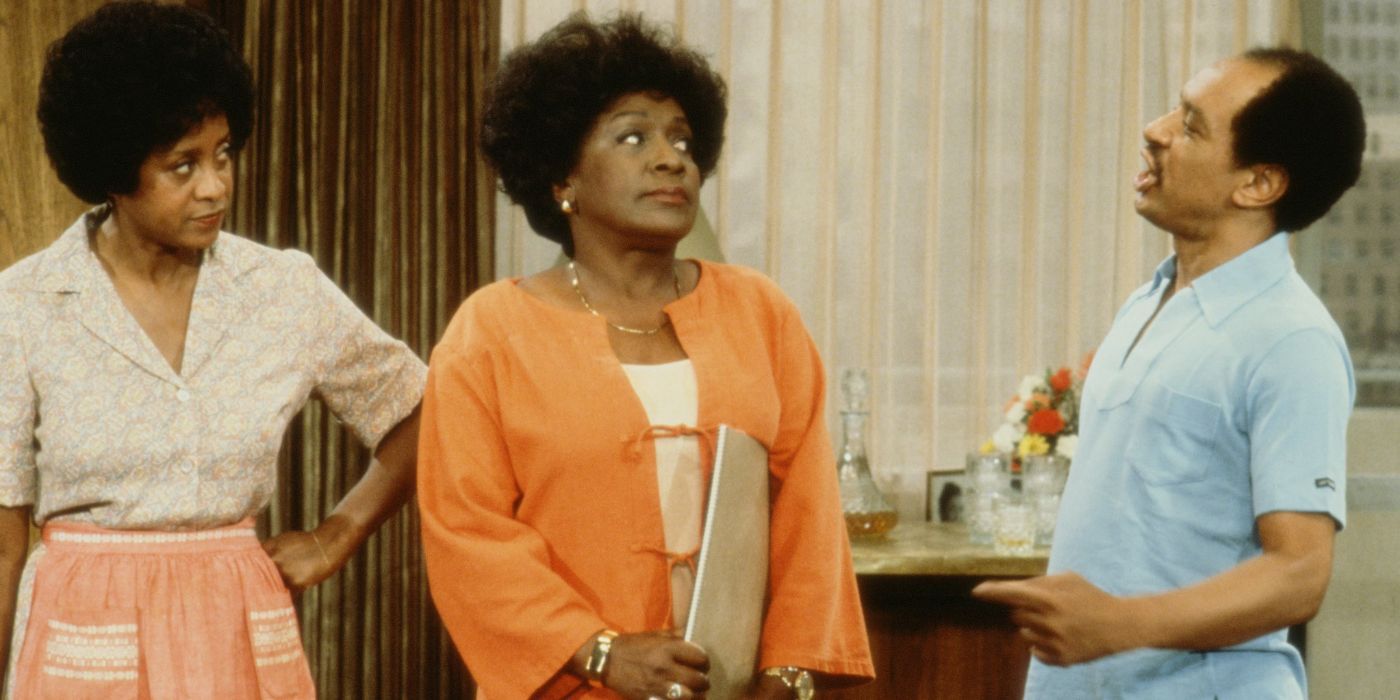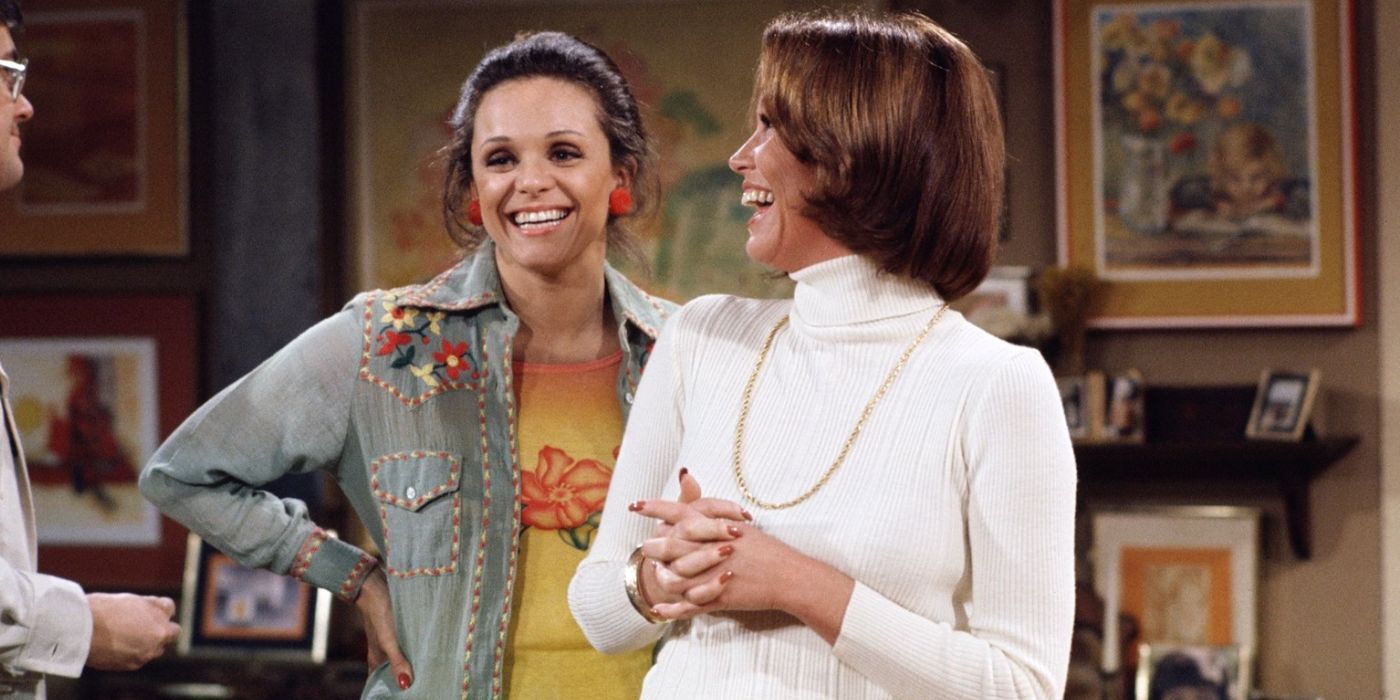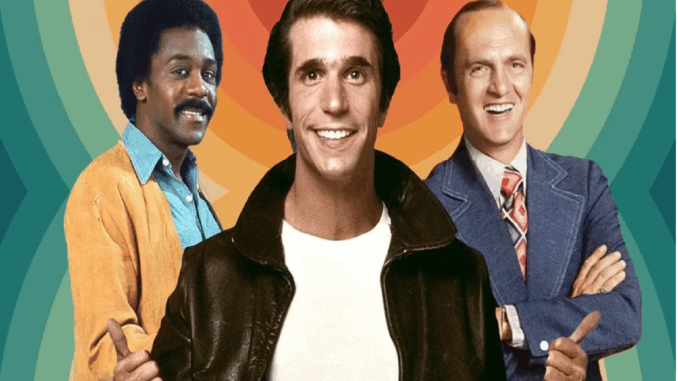
Straying away from the more innocent and idealized portrayals of family life, sitcoms in the ’70s shifted to a realistic and socially relevant dynamic of what real-life families are like. The decade opened doors for a wider range of shows that promoted diversity and awareness of many social issues. The best ’70s sitcoms have left behind rich legacies of characters, catchphrases, and theme songs that are still parodied and influential in major network syndication.
10. ‘Taxi’(1978-1983)
Creators: James L. Brooks, Stan Daniels, David Davis, Ed. Weinberger
A workplace comedy, Taxi showed the employees of the Sunshine Cab Company in New York City. The show touched on the lives of cabbies with varying ambitions and personalities, from a compassionate and philosophical driver to a good-hearted boxer and aspiring actors and artists. Following their daily lives in the bustling city, it showed the perfect dynamic of relevant issues while maintaining a blend of humor and heart. The motley crew won multiple Emmys throughout their run.
9. ‘The Bob Newhart Show’ (1972-1978)
Creators: David Davis, Lorenzo Music
“Oh, hi, Bob!” The Bob Newhart Show brought therapy into the mainstream. Starring the comedian as a psychologist living in Chicago, the show primarily revolves around Bob’s life both at home with his wife, Emily (Suzanne Pleshette), and his therapy practice. Most episodes mainly consist of his interactions with his eccentric patients and colleagues, touching on issues of mental health in a decade when the concept was still foreign.
Known for his dry humor, Newhart brought his deadpan comedy over, commanding scenes with his witty dialogue and subtle punchlines. The show was very well received despite never being an awards darling. Still, The Bob Newhart Show‘s legacy remains untouched; it created a fun and exciting work environment audiences want to learn from. Above all, the show has a wonderful arc over six seasons that gets viewers attached to evolving relationships.
8. ‘Sanford and Son’ (1972-1978)
Developers: Bud Yorkin, Norman Lear (Uncredited)
The classic sitcom portrays the life of a father and son as they run a salvage yard in the Watts neighborhood of Los Angeles. Humor often arises from the comedic interactions the duo have as they navigate their business and personal lives while dealing with the struggles of generational differences.
The show’s dynamic between a grumpy dad and his more affable son creates some of the funniest banter to ever appear on television. This dynamic, mixed with hilarious and silly situations, made Sanford and Son a hit with audiences. The show’s groundbreaking representation as one of the first American sitcoms with a predominantly Black cast is also a crucial part of its legacy, as is its willingness to tackle relevant social issues, such as race and class, with a healthy dose of humor.
7. ‘The Brady Bunch’ (1969-1974)
Creator: Sherwood Schwartz
As an evolution from shows like Leave It to Beaver, The Brady Bunch aimed to show the kids’ point of view. A refuge for many who hoped to turn off the tumult of the outside world and hang with their other family on screen, The Brady Bunch has become synonymous with ’70s Americana. The show spawned other huge successes, like The Partridge Family. Indeed, Brady’s wholesome, family-friendly humor became a staple, not to mention its theme song, which can easily get stuck in the heads of viewers.
6. ‘Happy Days’ (1974-1984)
Creator: Garry Marshall
By the mid-70s, people were getting tired of the excessive realness on television. Happy Days is a nostalgic throwback to the mid-50s, then nearly twenty years old and possibly a world apart. With rising stars Ron Howard and Henry Winkler, the show explored what friendships and family life are like as a developing, changing teenager. Immensely popular for Fonzie’s catchphrases, like “Aaay,” and the times of the 50s and 60s that many yearned for, Happy Days is to modern audiences what stuff like American Graffiti was to Happy Days‘ fans.
5. ‘Laverne & Shirley’ (1976-1983)
Creators: Garry Marshall, Lowell Ganz, Mark Rothman
“Schlemiel! Schlimazel! Hasenpfeffer Incorporated,” a Yiddish-American hopscotch phrase that set up for one of the most iconic series of the 70s. Laverne & Shirley follows the lives of two single women who work as bottle cappers in a fictitious brewery called Shotz. The series explores Laverne and Shirley’s misadventures, romantic pursuits, friendships, and personal lives throughout their seven years on television.
4. ‘M*A*S*H’ (1972-1983)
Cast: Alan Alda, Wayne Rogers, and Loretta Swit
Set during the Korean War, the show revolves around the staff of the 4077th Mobile Army Surgical Hospital, otherwise known as M*A*S*H, stationed in South Korea. Following doctors and nurses who work in the unit, the show blends comedy, drama, and social commentary while exploring the absurdity and tragedy of war.
3. ‘All in the Family’ (1971-1979)
Creator: Norman Lear
All in the Family is home to the infamous Archie Bunker, a conservative, working-class man who lives with his family in Queens, New York. His interactions with his more liberal-minded family and neighbors created a new sitcom format that was new to audiences. Challenging the status quo, the debut show of legendary producer Norman Lear kicked off a generation of sitcoms that pushed the limits.
A truly groundbreaking effort, All in the Family had many television firsts, like hearing a toilet flushing in the first episode or showing a gay character coming out. The show was culturally on point in each episode, as Archie faced his comeuppance most of the time or at least learned a lesson. With huge success, All in the Family sparked other famous shows such as Maude and The Jeffersons. It remained number on top of the TV rankings for a long time, allowing Lear to influence television for decades.
2. ‘The Jeffersons’ (1975-1985)
Developer: Norman Lear
Ever the visionary, Norman Lear took the opportunity to capitalize on a set of characters the American audience was already familiar with to showcase a new side to the Black experience. The Jeffersons were the neighbors of Archie Bunker for a few years before picking up their bags and moving across town; thus, a new age of television began.
As a spin-off from All in the Family, The Jeffersons saw the titular family going from Queens to a luxury apartment on Manhattan’s Upper East Side. The Jeffersons is among the most revolutionary shows on television. It dealt with deep issues, especially for the time, as the family interacted with their more affluent neighbors. The Jeffersons broke boundaries, appealing to a wide audience for its witty humor, prominently featuring an upper-middle-class African-American family as well as inter-racial couples. Few shows can claim to have the same level of impact as The Jeffersons, and its legacy lives on in the many stories it inspired.
1. ‘The Mary Tyler Moore Show’ (1970-1977)
Creators: James L. Brooks, Allan Burns
To put it simply, The Mary Tyler Moore Show is the 1970s, and Mary Tyler Moore was the main event. The show follows Mary Richards, a woman who moves to Minneapolis to pursue a career in television and journalism. Groundbreaking for showing a single woman in her dating life, Mary deals with her relationships in the newsroom as well as outside.
Displaying the workplace habits of the sexes and what being older and single is like, The Mary Tyler Moore Show was a true step forward for female on-screen representation. Moore showed her workplace was like family, and she didn’t need anyone else in her life. Initially supposed to be divorced, the network refused to allow the idea because it was still controversial at the time. Ultimately, what made the show great was the casting and brilliant writing, arguably the best in the decade. With a sensibility towards a female audience, The Mary Tyler Moore Show made a relatable set of circumstances for an audience that was otherwise isolated.
